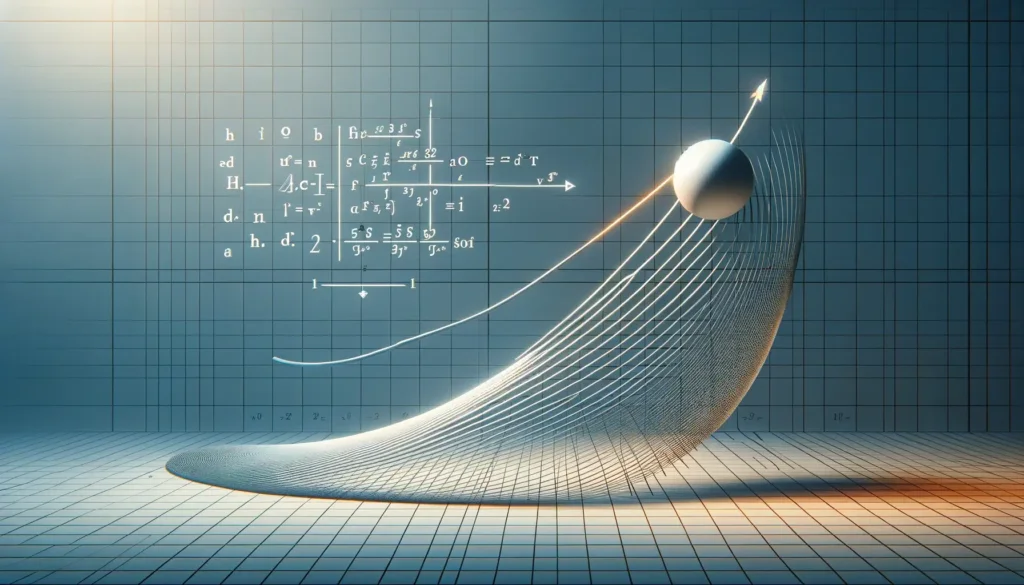Variables
Before we get started you need to thoroughly understand the 5 kinematic variables [katex] \Delta x, \, v_0, \, v_f,\, a, \, t [/katex]. I cover this in a separate post along with the big 4 kinematic equations. Ideally you should have these equations memorized to solve problems rapidly.
All questions require logic and critical thinking. Your goal is to be able to adapt the framework below to solve the hardest of questions.
1D Problems
Here are two examples of 1d problems. The first one is an example of a situation along the x axis (horizontally) and the second problem is a situation along the y axis (vertically)
- A car moves at 12 m/s and coasts up a hill with a uniform acceleration of -1.6 m/s. What is the displacement after 6 sec?
- A stone is thrown vertically upwards with a speed of 20.0 m/s. How fast is it moving when it reaches a height of 12.0 m?
1D Framework
- Read the problem and identify the 3 given variables. Every 1d problem will ALWAYS give you 3 variables.
- For problems along the vertical (y) direction, be sure set acceleration equal to gravity (9.81 m/s2)
- Identify the one variable you are asked to solve for.
- Pick an equation that fits what you have written down. A simple way to do this is identify the last variable that isn’t involved in the problem at all. Pick the kinematic equation that doesn’t have that variable.
- Note that every kinematic equation is always missing one variable.
- Plug and chug! Plug in all the numbers and solve for the unknown variable.
LRN 1d problems
Special Exceptions
Some problems are disguised as 1d Kinematic problems. Instead of using a single kinematic equation, these problems are generally solved via a system of kinematic equations.
Take a look at this 1D kinematics problem here:
An ice sled powered by a rocket engine starts from rest on a large frozen lake and accelerates at +13.0 m/s? At t1 the rocket engine is shut down and the sled moves with constant velocity v until t2. The total distance traveled by the sled is 5.30 x 103 m and the total time is 90.0 s. Find t1, t2, and v.
Following the exact framework above will not help you solve this problem.
So how do you solve it?
It requires critical thinking. Let’s start with the fact that we are asked to solve for 3 things. This implies you will have a minimum of 3 equations.
Looking at the givens, we can conclude that each of the 3 equations can be a kinematic equation. From here, you solve the system of 3 equations in whatever way you prefer.
2d Problems
Note that 2d problems involve an object moving along BOTH the x and y axis. Therefore, we can apply the 1d framework twice (once in either direction) to solve a 2d problem. Here is an example of a 2d, also known as a projectile, problem:
(Solve only after reading the framework below and watching me apply it in the video)
A spider crawling across a table leaps onto a magazine blocking its path. The initial velocity of the spider is 0.91 m/s at an angle of 40° above the table, and it lands on the magazine 0.08 seconds after leaving the table. Ignore air resistance. How thick is the magazine in mm?
2d Framework (The chart method)
- Make a diagram of the situation and understand exactly whats going on visually.
- Make a 2 column chart. Label one side x and the other side y.
- Fill in each side of the chart with the kinematic variables and make a note of the variable you are trying to solve for. Remember to use subscripts to differentiate
- Once the chart is filled, look at variable you are trying to solve for and ask yourself the question: Do I have enough knowns on this column to use a kinematic equation. If “yes” pick a kinematic equation and solve the problem. If “no” move on to step 5.
- Look at the other column of the table. Ask yourself “is there anything i can solve for on this side and use on the other side?” Usually the answer is yes. And most often you will solve for time, as time is the same on both sides. Solve for this variable and fill it in on your chart, and go back to step 4. This time you should be able to pick an equation and solve for the final variable.
LRN Projectiles
Let’s put the 2d framework above into practice. Watch the video below, then try to solve the 2d problem about the spider above.
Conclusion and Tips
Solving these problems quickly, require a lot of practice. For AP students, I recommend doing 50-75 kinematic problems before for taking the test.
Memorize the equations, by writing them down on a flashcard and using them repetitively.
Lastly, make sure to set your directions before solving a problem. Using +/- signs correctly are a huge factor in solving problems students overlook.


